
This is my favourite “theme” Round that the AFL does to promote a cause or honor a group of people. In this case, it is Sir Doug Nicholls, a pioneer in advocating for Aboriginal people’s rights in Australia.
***

I highly recommend you read this article on the man so you can understand why he is so important in Australia. Alternatively, you can watch this video:
It would be easy to make the comparison that Doug Nicholls was the Australian Martin Luther King. Some of it rings true and there are similarities, but it’s two different countries and two different situations.
Doug Nicholls became a Governor in Australia and worked through the system to effect change. His legacy, however, goes beyond legislation. He is an inspiring figure and a lasting reminder that human rights belong to everyone.
Is it a coincidence that Australia as a nation legalized gay marriage? I think not.
***
Without further ado, here are this year’s guernseys!
Adelaide Crows
Brisbane Lions
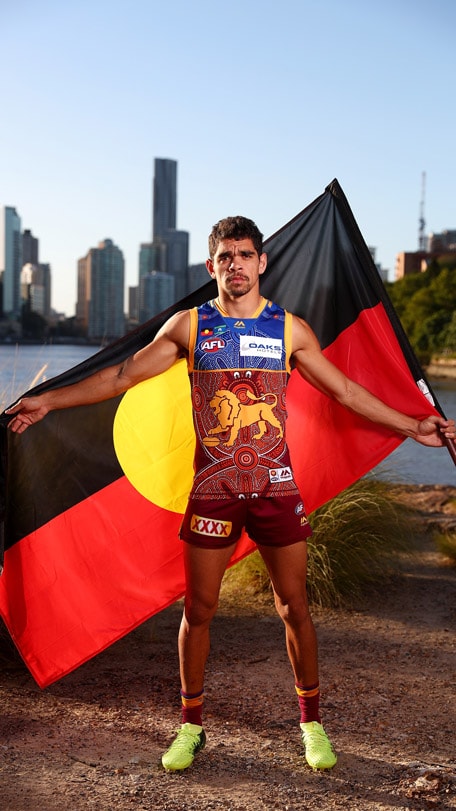
Brisbane-born artist Elaine Chambers designed the jumper, which features a meeting place (the Gabba) that is part of the Turrbal and Yuggera nations. “With respect to the people of the land, I have designed the art showing people coming together from north, south, east and west, and meeting on these sacred grounds,” Chambers said.
Carlton Blues

The Guernsey Design:
OVERALL IS BASED ON COUNTRY, CONNECTION, COMMUNITY AND CLUB. IT FOCUSES ON THE CARLTON FOOTBALL CLUB HISTORY IN THE AREA AND THE CLUB’S APPROACH TO BUILDING BETTER COMMUNITIES ACROSS AUSTRALIA.
Carlton Football Club Logo:
THE LOGO ITSELF IS BASED ON THE CANOE TREE WHICH IS SIGNIFICANT TO MANY ABORIGINAL GROUPS IN VICTORIA AND OTHER ACROSS THE COUNTRY. THE CANOE WAS USED FOR TRANSPORT, USED FOR HUNTING, TRADE BETWEEN GROUPS. THE TREE ALSO PROVIDED MANY OTHER RESOURCES FOR OUR PEOPLE SUCH AS THE BOOMERANG WHICH CREATES THE C IN THIS LOGO AND JUST AS THE BOOMERANG ENSURES THE CLUB RETURNS TO SUCCESS BOTH ON AND OFF THE FIELD.
THE DOTS AROUND THE LOGO REPRESENT THE TREES THAT SURROUND THE BORA GROUND WHICH IS A SIGNIFICANT PLACE WHERE CEREMONIES ARE HELD. THE SAME WITH THE TREES AROUND PRINCES PARK WHICH ALSO A SIGNIFICANT PLACE FOR ABORIGINAL PLAYERS AND FANS ALIKE BUT THE DOTS ALSO REPRESENT THE MANY COMMUNITY GROUPS THE CARLTON FOOTBALL CLUB WORK WITH AND SUPPORT AROUND THE COUNTRY.
THE PATHWAYS REPRESENT THE CARLTON FOOTBALL CLUB’S MANY JOURNEYS ACROSS THE LAND TO SUPPORT ABORIGINAL COMMUNITIES. EACH PATHWAY HAS ITS OWN CHALLENGES AND BUILDS CHARACTER WHICH IS ONE OF THE REASONS THE CARLTON FOOTBALL CLUB IS A SUCCESSFUL CLUB.
THE MARKINGS REMIND US OF OUR JOURNEY WHERE WE COME FROM, OUR BOUNDARIES AND ROLES AND RESPONSIBILITIES TO EACH OTHER WITHIN OUR RESPECTIVE CLANS.
THE COLOURS AND TEXTURES IN THIS GUERNSEY IS TO REPRESENT THE DEPTH AND BREADTH OF COMMITMENT REQUIRED FOR THE CARLTON FOOTBALL CLUB TO HAVE THE IMPACT AND GROWTH. ITS DESIRES WHEN WORKING WITH ABORIGINAL COMMUNITIES AND OTHER DIVERSE GROUPS WITHIN THE BROADER COMMUNITY.
Collingwood Magpies


Mick Harding is the artist of the 2018 Indigenous Guernsey he has shared the following which formed inspiration and meaning behind the guernsey.
The Magpie is a fantastic story teller, You can hear it in their song, It belongs to this land, just like we do.
The section that surrounds the Magpie represent panels of a Possum’s Skin Cloak which articulates the diversity and complexity of all the Aboriginal groups throughout Victoria and Australia.
We belong to this land and have a deep affinity with it.
Essendon Bombers
Fremantle Dockers

Former Docker Dale Kickett and respected Noongar elder and artist Dr Richard Walley, the club’s No. 1 ticket holder, designed the jumper. It features multiple facets representing the club, including players and their families, coaches and staff and fans. It also carries symbols denoting the six Noongar seasons.
Geelong Cats


Designed by Nathan Patterson
Elements of the design:
Centre piece represents a meeting place (the U shapes & Circle)
In the circle is a silhouette of the YouYangs, below the mountains is the Barwon River, which flows into the Ocean
Behind the YouYangs is the rising Sun, representing Kardinia Park which in Waddawurrung language means “the First Rays of Light”
The Dotwork in the hoops symbolises the Saltwater and in the white is the symbol for freshwater/running water
Gold Coast Suns
GWS Giants

The GIANTS have unveiled their 2018 Indigenous jumper ahead of Sir Doug Nicholls Round next month.
After calling for entries from Indigenous and Torres Strait Islander artists in November last year, the club received dozens of designs from across the country.
After careful consideration, the club’s Reconciliation Action Plan (RAP) working group – which includes players Zac Williams and Jeremy Finlayson – selected Northern Territory born artist Nathan Patterson’s Learning Together, Growing Together, Walking Together as the winning design.
“In the centre I have painted a meeting place/campfire representative of the club but also the Aboriginal community as a whole,” Patterson said of his design.
“I have incorporated the four community pillars (harmony, health, education, employment), represented by the four ‘U’ shapes seated around the central meeting place.
“Beyond the meeting place there are other campsites which symbolise the flow-on effects felt in community when these pillars are successfully applied.
“I have also painted four sets of footprints. These speak of true reconciliation, walking together side by side to create a better future for generations to come.”
Included on the jumper for the first time is an acknowledgement of country that runs along the outside of the collar.
Hawthorn Hawks

Painted by Jennifer “Lulu” Coombes and inspired by Cyril Rioli, Hawthorn’s new 2018 indigenous guernsey design features two prominent aspects of the Tiwi Island culture, Pukumani Poles and the Kulama ceremony.
Pukumani Poles, which are found on the front of the guernsey, are commonly used in ceremonies and are also placed around the graves of the deceased in order to protect the dead from evil spirits. The art on these Poles is unique, often telling a story about the departed individual.
On the back of the guernsey, the circular figures are a depiction of a Kulama Yam Ceremony. Such ceremonies occur at the beginning of the dry season, around the months of April and May. They run over three days and nights, with the rituals conducted by Tiwi men and women who participate in the ceremony. Songs are composed to tell of events, both positive and negative, that have occurred on the Islands in the past year.
Coombes’ final touch is inside the guernsey.
“Junior Boy (Rioli) asked to have Tiwi wording on the jumper, so I called my aunty Therese Marie and, after a week and a half of consulting with Old Lady Callista Kantilla, we agreed on the wording.”
The wording they settled on is “Ngawa Puranji Yiloga”, which translates to “We love our footy”.
“I feel honoured and privileged that my nephew, Cyril Rioli, has asked me to design this year’s indigenous jumper,” Coombes said.
“Not just for our family, but the whole of Tiwi Islands and the Tiwi people, to be able to showcase our culture on the footy arena is just an awesome feeling.”
Melbourne Demons
North Melbourne Kangaroos
Port Adelaide Power
Richmond Tigers
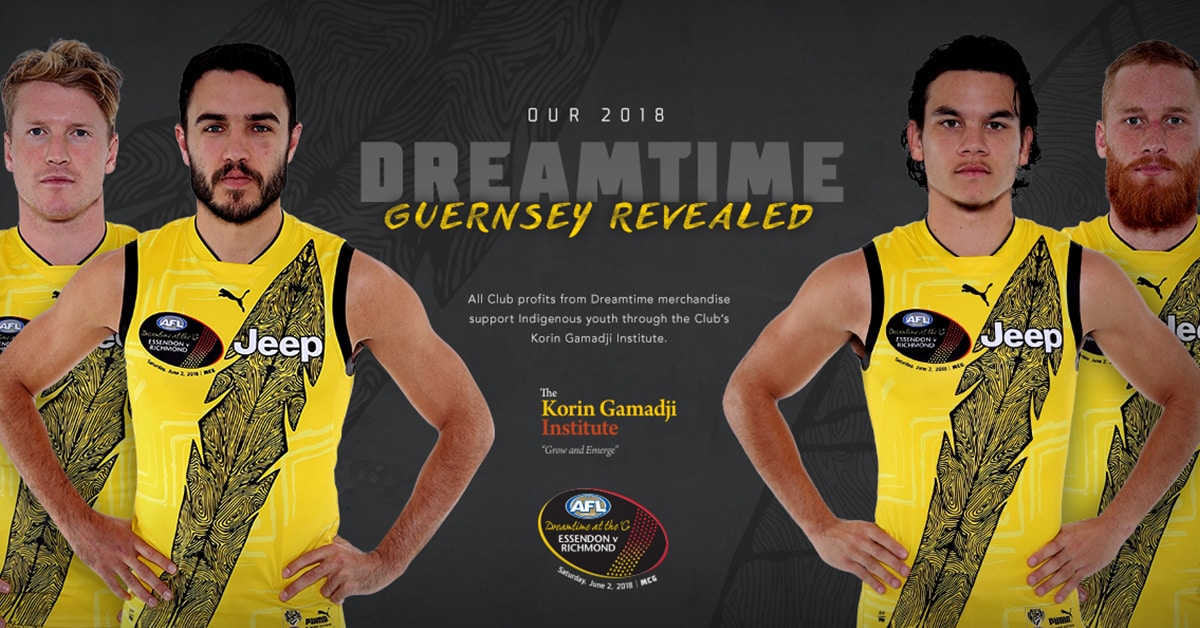
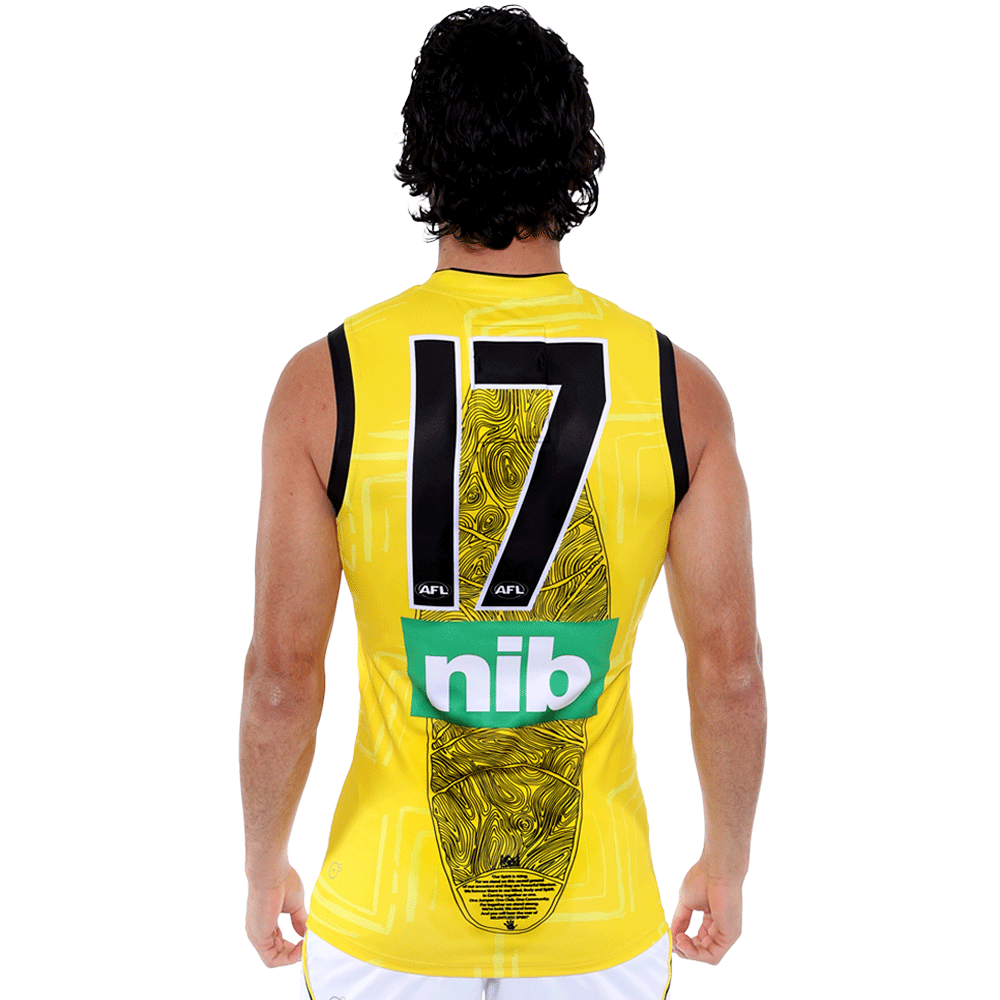
This year’s artist, Robert Young, a Gunnai and Waradjurie man says the design represents strength and connectedness.
“The design symbolises the intricacies of our Indigenous culture, and how we use our artwork, song and dance to be powerful, strong and bold,” Young said.
“But it’s when we look deeper, and see all of those elements and our family, culture, land, and spirit all moving together as one, you see the true beauty of our people.”
The yellow background symbolises the ground carvings of borra grounds, which are the grounds of initiation.
A spear runs across the front of the jumper where the ‘sash’ usually sits, and also a shield on the back of the jumper.
Young says the shield is our greatest weapon, as it not only provides protection for the warrior, but also represents those they are protecting.
“The markings that run through this shield move together as one, but represent many journeys – the journeys of each person on this team, the journeys of each person of this country. It’s when they move together as one that the shield finds it strength,” Young said.
The spear element on the front of the jumper is a representation of the relentless spirit that resides in all of us, helping us to overcome the hardships and challenges in our lives.
“We stand with resolve that no matter how many times we get knocked down, no matter how great the obstacles that lay before us, no matter the fear, the doubt, or the worry, we will get up time and time again, and we will feel the roar of our relentless spirit.”
Richmond CEO Brendon Gale said he was proud to have Young’s design on the Tigers jumper.
“We thank Robert for his work in developing our Dreamtime jumper for this season. It is a wonderful design with an important and meaningful story attached to it,” Gale said.
“We are proud of the fact we were the first Club to adapt our jumper to incorporate Indigenous art. It is both a celebration of Aboriginal and Torres Strait Islander culture and importantly a reflection of our commitment as a Club.”
As in previous years, the Dreamtime guernsey is available for purchase in-store and online at the Tigerland Superstore, along with a Dreamtime cap, scarf, and pin.
Proceeds from the Dreamtime guernsey and clothing range will support the Korin Gamadji Institute, to further strengthen its programming to empower Aboriginal and Torres Strait Islander youth. Click here to purchase.
About the artist:
Robert Young is a 28-year-old Gunnai and Waradjurie man living in Warrandyte, Victoria.
Young has grown up around the arts, his mother and uncles are artists and performers, and Young himself studied Theatre at the Victorian College of the Arts. In recent years Young has grown into a prominent contemporary Indigenous artist in Australia.
He has created several Reconciliation Action Plan artworks, a large inner city mural on Charcoal Lane Restaurant in Fitzroy (formally the Victorian Aboriginal Health Services.) Young is also a mentor, and does cultural presentations and workshops in schools and businesses around Australia.
Young’s artistic inspiration comes from his culture, family, nature, and his own internal creativity that has been formed from his life experience.
Through his art, Young seeks to empower other young Indigenous men and women, and also educate people on Indigenous culture, history and spiritualty. He hopes to support the next generation of Indigenous people to develop a strong identity of self, culture, community and social justice.
St. Kilda Saints

Player Jade Gresham and his mum Michelle helped design the jumper, with help from club graphic designer Malcolm Wallace. The design represents the land of the Yorta Yorta people. The traditional St Kilda tri-colours have been adjusted to form an abstract geographical representation of the Yorta Yorta lands, while an intricate detail reminiscent of a turtle’s shell runs through the red and black panels.
Sydney Swans
The striking design tells the story of the black swan, Guunyu, inspired by the artwork of leading NSW artist Cheryl Davison. Her work, based on stories from the elders in her community, has been exhibited nationally and internationally.
The Sydney Swans engaged Davison following a connection made through the club’s Reconciliation Action Plan committee and Blak Markets – a hub for Indigenous businesses that exhibits locally at Bare Island, NCIE in Redfern and the Overseas Passenger Terminal in The Rocks. Blak Markets provides development and training opportunities for young Aboriginal people.
RAP committee member Lance Franklin became the first player to pull on the new jumper and said he will wear it with immense pride.
“When I first saw the jumper, I was immediately struck by the black swan – it’s a strong image and has a wonderful story behind it,” Franklin said.
“Marn Grook is my favourite game of the year because it celebrates what Aboriginal and Torres Strait Islander people bring to our game. Celebrating that heritage is something that’s really important to our whole football club.
“Running out in this jumper on the Friday night stage is going to be really special.”
It’s the first time Sydney will change its Indigenous jumper from the 2014 guernsey designed by Lisa Sansbury, the mother of Swans great Adam Goodes.
Sydney Swans CEO and Managing Director Andrew Ireland said elements from the original design have been retained in Sydney’s Marn Grook logo.
“When discussing whether to change our jumper we wanted to ensure the original design by Lisa Sansbury lived on, as it meant so much to our club,” Ireland said.
“Her iconic red and white pattern surrounded by the blue of Sydney’s waterways features in our Marn Grook logo. Depending on who our opponent is for Marn Grook, and the colour of their jumper, we will wear the jumpers interchangeably in the future.
“On behalf of the club I would like to thank Cheryl Davison, Blak Markets and our RAP Committee for bringing the new jumper to life – we’re really looking forward to seeing the team in the black swan for Marn Grook at the SCG.”
West Coast Eagles

This year’s West Coast Eagles Sir Doug Nicholls Round guernsey was designed in consultation with the club’s Reconciliation Action Plan (RAP) reference group, which includes the likes of current players Lewis Jetta, Willie Rioli and Liam Duggan, coaches Jaymie Graham and Adrian Hickmott and former player and West Coast Eagles indigenous liaison officer Phil Narkle.
In November 2017 RAP representatives approached the broader playing group, coaches and staff to begin designing a guernsey that reflected the club’s unique culture and history.
As part of the process, the RAP group also engaged several local Aboriginal artists and asked them to capture the essence of the Eagles.
West Coast Eagles RAP chairperson Richard O’Connell said: “The design process encouraged everyone to understand the story our Aboriginal players wanted to tell and then have input about how to best depict that story. This resulted in lots of conversations between players, coaches and staff from all walks of life – a wonderful example of reconciliation in action.”
Aboriginal artist Kevin Bynder brought the club’s story to life with his eye-catching design.
Bynder is a Whadjuk-Yuet-Balaadong man from his mother and a Badamia Yamatji from his father.
He grew up the northern suburb of Girrawheen in Perth and currently works at LaSalle Catholic College, where he uses his knowledge and culture to teach young Aboriginal students.
The club’s 2018 Sir Doug Nicholls Round guernsey centres on the Waalitj (wedge-tailed eagle) with its talons poised ready to attack its prey.
Aboriginal player Lewis Jetta said he was thrilled with the final design.
“The strength of the Waalitj ready to pounce is a great symbol of how we play our football, focused and determined to succeed,” Jetta said.
In the Dreamtime before the land was formed, the Waagyl (Rainbow Serpent) would wait for the Waalitj to guide her towards fertile land and areas where the Waagyl could lay her eggs.
The Waagyl would trust the Waalitj, as the Waalitj represents strength, courage, wisdom, healing and creation.
The Waalitj’s talons in the artwork demonstrate its ferocity and therefore the ferocity of the West Coast Eagles.
The Waalitj’s prey feels and sees its talons before impact, much like the club’s rivals before they witness our might on the field.
The circles at the top of the design represent the members, fans and football community, with the small semi-circles (signifying footprints in Aboriginal symbolism) that surround them portraying the varied pathways that lead to the club.
Below the Waalitj, the circles that hold it represent past players, staff, members and fans stood around the Derbal Yirrigan (Swan River).
Although these figures may have ‘moved on’, their legacy and spirit is not lost.
The design as a whole depicts the connection of the club to its players, supporters, community and heritage, as it is through the Waalitj that the land today is as we see it: full of diversity, growth, freedom and opportunity.
The Guernsey will be worn twice this year, in Round 11 when West Coast plays St Kilda and Round 16 when the Eagles play the GWS Giants during NAIDOC week.
Western Bulldogs
BONUS! Umpires’ Indigenous Shirt!
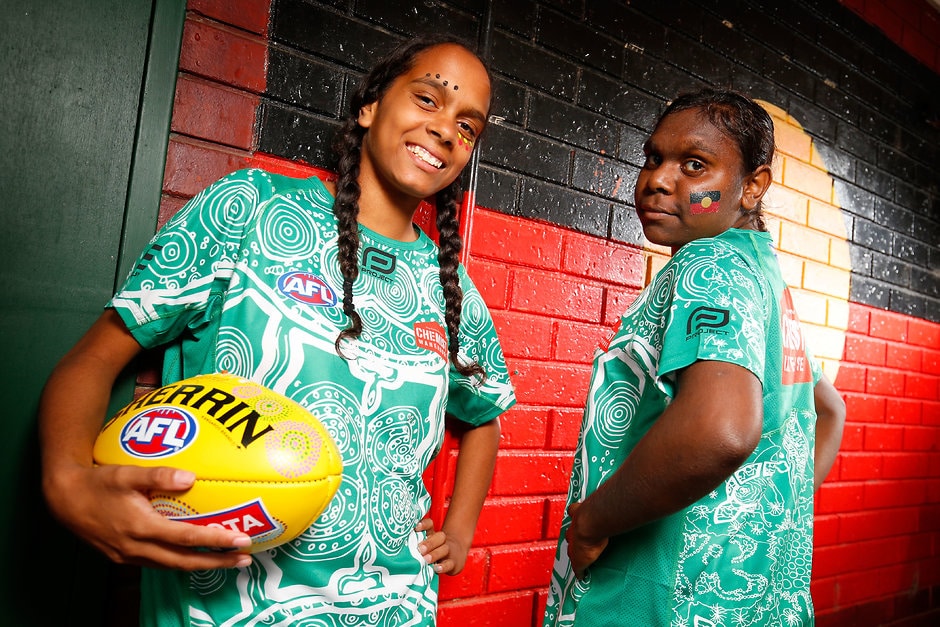
Two students from the Worawa Aboriginal College, a boarding school for girls, designed the shirt.
The front of the shirt, designed by Marianna Gurruwirri, represents land and Aboriginal culture.
Zephaniah Neil created the back of the green shirt, depicting water and the Torres Strait Islander communities.
Worowa Aboriginal College has a close affinity with umpiring, with AFL Victoria running an umpiring diversity academy at the school for the past three years.
Eight members of the academy will adjudicate a game during the half-time break of the Dreamtime at the ‘G match between Essendon and Richmond in round 11.
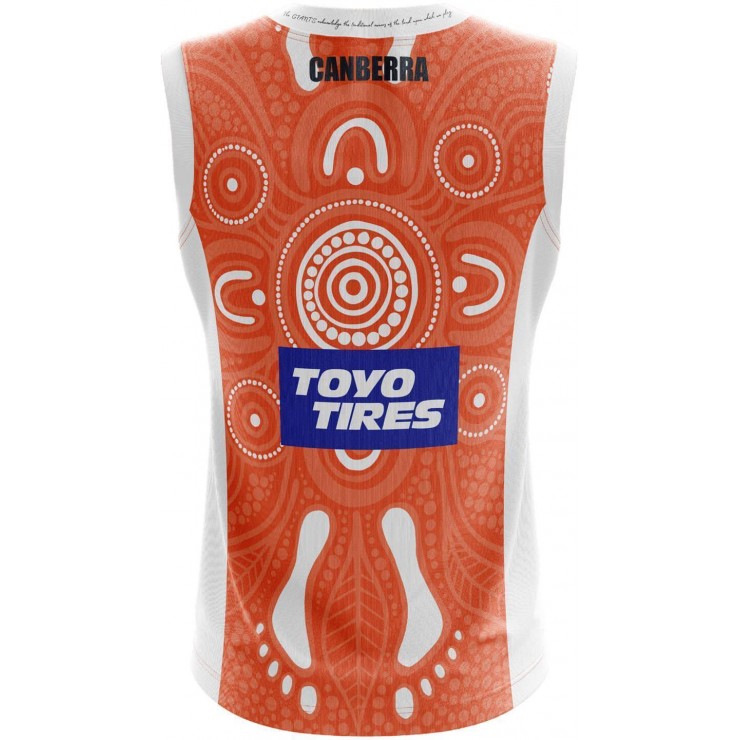

[…] Nicholls, a pioneer in advocating for Aboriginal people’s rights in Australia. You can read last year’s post to discover about the man and what he was able to accomplish and why he is such a big […]
The Tigers is great, Saints RAWK. The funky turtles sealed the deal for me.
Carlton is inhabited by Italian immigrants, THEY SHOUT AND GESTURE WILDLY THERE!
That’s nothing the NFL proudly honors the heritage of the first people to live in America, the greatest country on Earth. We even do it in our nation’s capital.
Oh, that’s wonderful.
A lot of these are pretty dope.
How many Aboriginal players are playing/ have played in the AFL?
Lots
these jerseys are awesome. Wish other leagues would put as much thought into the 3rd kit as was done here.